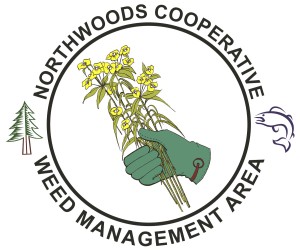High Priority Invasive Species in the NCWMA
Below are a few high priority invasive species of the NCWMA. Click this link for information on these and other high priority invasive species in our region.
Garlic Mustard
Garlic Mustard spreads quickly through rich hardwood forests. Volunteers can help hand-pull garlic mustard in the spring! Read more!
Knotweeds
Giant, Japanese, and Bohemian Knotweeds were planted in yards throughout the region. Read more on basic identification and the NCWMA Knotweed Project.
Wild Parsnip
Watch out for wild parsnip! This invasive species can cause severe blisters when sap on skin is exposed to light. Read more!
Giant Hogweed
Giant in every way! The sap is toxic to skin. This species is rare in our area. Learn how to identify it.
Invasive Bushes
Exotic buckthorns, honeysuckles and Japanese barberry are ornamental bushes that invade forests. Learn more.
Teasels
Cut-leaf and common teasels are uncommon in the area. The NCWMA would like to eradicate all sites. Learn more.
Phragmites
Invasive Phragmites (common reed) takes over wetlands. Learn more
Purple Loosestrife
Purple loosestrife is pretty, but invasive in wetlands throughout the area. Learn more.
Garden Valerian
Garden valerian has become very common along roads and fields in Douglas and Bayfield County. Learn more.




























